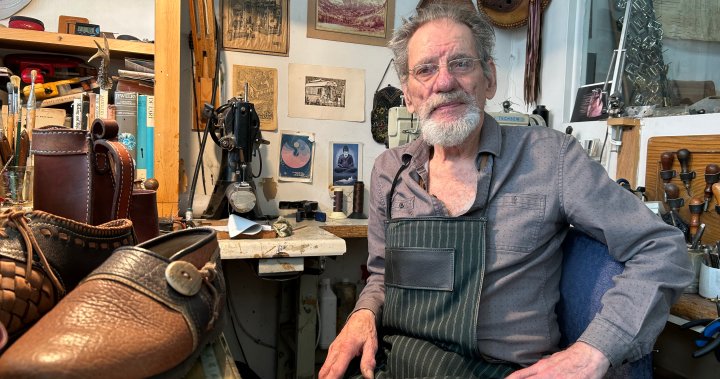The Plateau-Mont-Royal neighborhood has long been a haven for artists, with its cheap rents attracting colorful characters to the area. One such individual is leather artisan David Rogers, who has become a staple in the community of Petit-Laurier. Rogers, admired by residents and passerbys alike, runs a storefront that serves as part art gallery, part custom leather atelier. His presence in the neighborhood has been a major draw for many, with one resident noting that his store is one of their personal favorites.
However, the neighborhood is facing change as Rogers prepares to close his shop. After more than 20 years in the same location, he is being forced to move due to a tripling of the rent by the new building owner. Despite the upheaval, Rogers, at 80 years old, is at peace with the change, citing a lifetime of experiences and changes that have prepared him for this moment. Having lived a nomadic lifestyle before settling in Montreal, Rogers started his leather work out of necessity and has since become a self-taught artisan known for working with exotic leathers such as lizard, deer, and bear.
Rogers’ unique work has garnered attention from big names, including Julia Roberts, but what he is most proud of is his annual Easter egg contest. The contest, now in its tenth year, features whimsical creations by neighborhood residents, especially children living within a few blocks of Rogers’ store. He hopes to find a new home for the collection so that it can continue to bring joy to the neighborhood for years to come. Rogers believes that it is this sense of community and joy that he will miss the most as he prepares to close his shop.
The impending closure of Rogers’ shop highlights a broader issue facing the Plateau-Mont-Royal neighborhood: the increasing gentrification and rising rents that are pushing out the very artists and unique individuals who made the area so attractive in the first place. As rents continue to rise, it becomes increasingly difficult for small businesses like Rogers’ to survive, leading to the loss of community staples and beloved establishments that give the neighborhood its character and charm.
Residents of the neighborhood, like Tressa Marré, express admiration for Rogers and his contributions to the community. However, as the neighborhood undergoes changes and long-standing businesses are forced to close their doors, there is a sense of loss and nostalgia for the unique and vibrant atmosphere that once defined the area. Rogers’ impending departure serves as a reminder of the challenges facing artists and artisans in rapidly changing urban environments and the importance of preserving spaces that foster creativity and community connections.
Despite the uncertainty of the future and the loss of his beloved storefront, Rogers remains optimistic and philosophical about the change. As he prepares to hand over the keys to his shop, he reflects on the journey that brought him to this moment and the impact he has had on the neighborhood. While the closure of his shop marks the end of an era for Petit-Laurier, Rogers’ legacy as a beloved artisan and community figure will continue to live on in the hearts of those who have been touched by his creativity and warmth.


